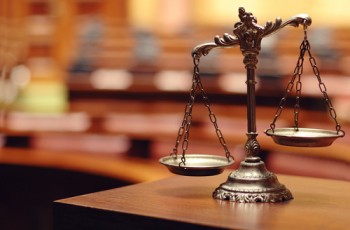Sustainability network helps law firms go green

Peter Masaitis says law firms looking for ways to be environmentally responsible with paper are often pleasantly surprised at cost savings. Photo by Sal Owen.
Going green at a law firm—with just a bit of persistent discipline—tends to become a way of being.
Take the Law Firm Sustainability Network, a growing group of environmentally conscious law firms that have discovered thinking and acting green tends to engender ever more Earth-friendly tactics.
Originating from a dozen or so law firms in 2011, the network now counts more than 30 registered members and is looking to become the go-to source for all things sustainable in the legal industry.
“For many of the LFSN member firms that participated in the pilot run of the program, it was an eye-opener to see how many different initiatives could be taken on with little additional effort,” says Peter Masaitis, network president and a partner at Alston & Bird based in Los Angeles.
Masaitis says new members often join looking for ways to be environmentally responsible with paper, only to be pleasantly surprised that green paper management also triggers significant cost savings.
“Law firms are notorious for their use of paper,” agrees Carolyn Kaplan, a network board member, Boston-based counsel and chief sustainability officer at Nixon Peabody. “There are so many ways to conserve paper that are easy to implement,” Masaitis adds, “but many firms have not. A simple example is shrinking the margin size on document templates.”
IMPROVING ON THE PAST
Probably one of the greatest benefits for new LFSN members is online access to the network’s expanding library of green best-practices case studies that have been filed by existing members.
New members can use the Web to rifle through scores of detailed plans on green strategies that have already worked, and either implement one or more of those plans or put a new spin on a previous solution.
“When early adopters share their experiences and lessons learned,” Kaplan says, “they create an easier path for other firms to follow.”
The network holds monthly webinars focusing on tactics to foster a specific facet of green consciousness, such as how to partner with clients on sustainability initiatives, keys to employee engagement or office lighting.
The webinars also often bring in outside expertise. Representatives from the Environmental Paper Network, Office Depot and Sugarmade contributed to a webinar on environmentally smart paper practices, Masaitis says. And experts from State Street and EnerNOC offered ideas on how law firms can partner with clients to be more Earth-friendly.
SUSTAINABILITY TOOL
Another topic of keen interest to members: How to get a law firm’s building certified as green by the U.S. Green Building Council, Kaplan says.
This year the group plans to release a self-assessment tool for law firms—the American Legal Industry Sustainability Standards tool—that firms can use to evaluate their level of environmentally friendly practices and pinpoint strategies and tactics they can use to take things up a notch. The tool will also be available for use by in-house legal departments, which can now also join the Law Firm Sustainability Network, Masaitis says.
“The tool is essentially a guidebook of environmental best practices for a law firm,” says Kaplan. “Even those firms that have demonstrated sustainability leadership can learn from their peers. And those just getting started have a road map.
“We are also emphasizing the importance of data,” she says, “as what gets measured gets managed.”
This article originally appeared in the February 2014 issue of the ABA Journal with this headline: “Going Green: Network grows even more ecological ideas.”



